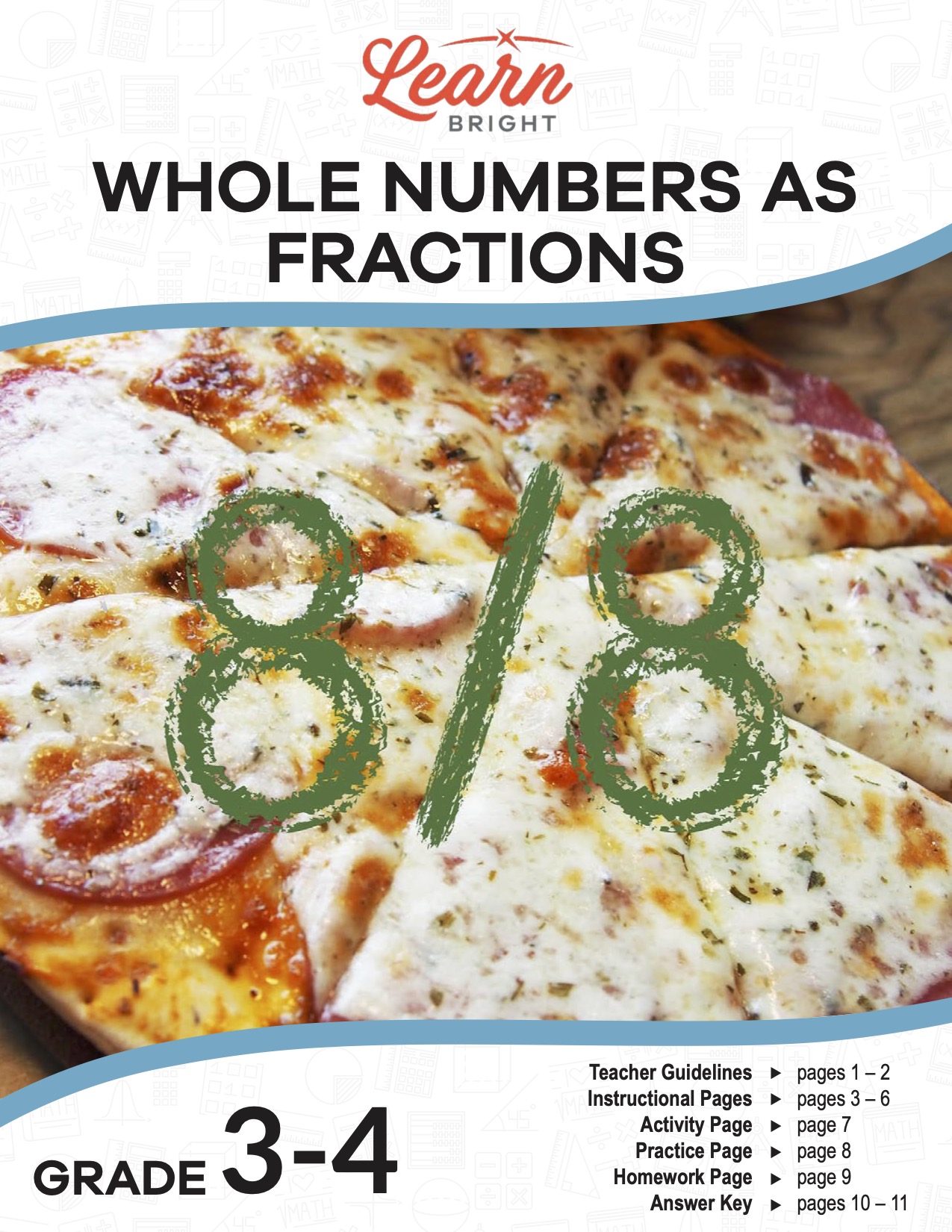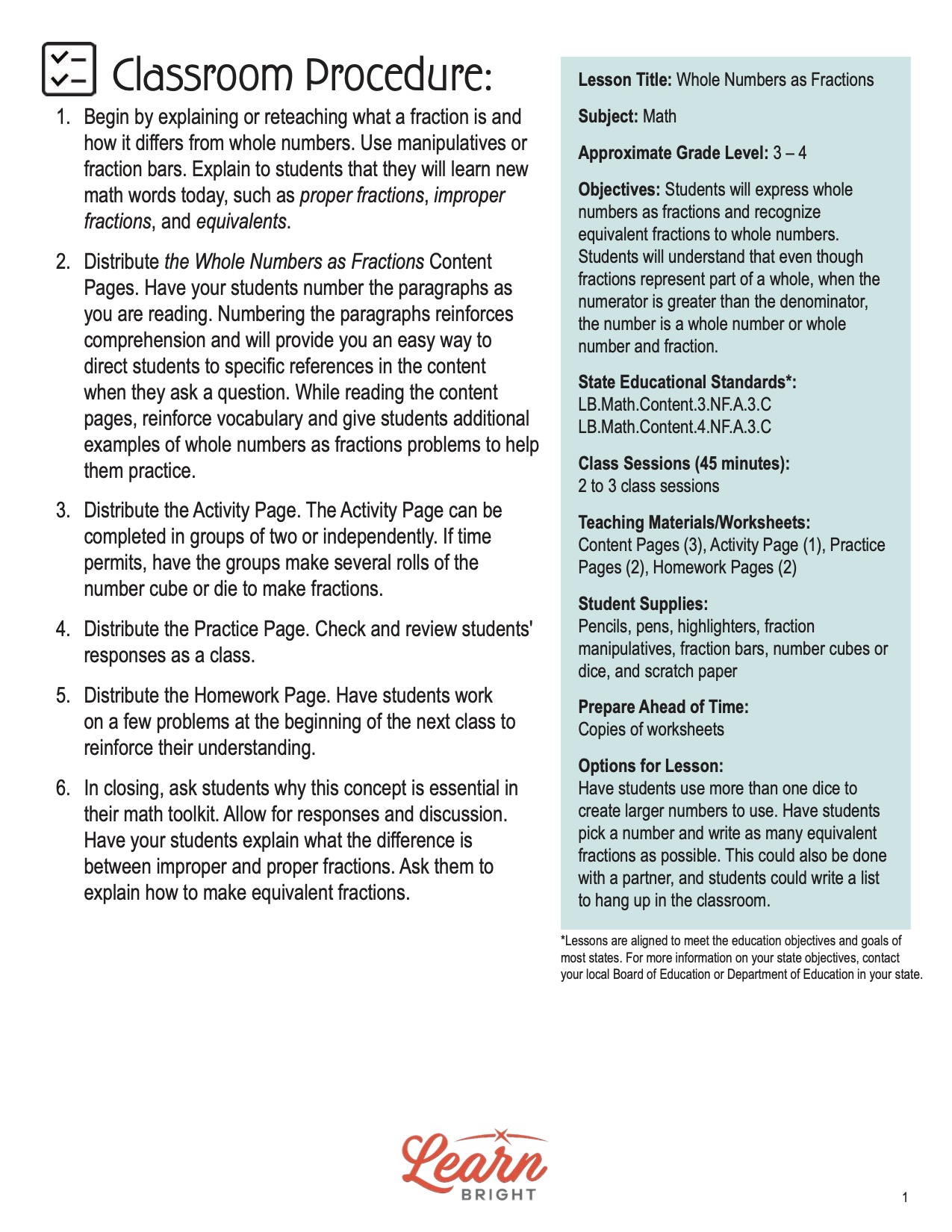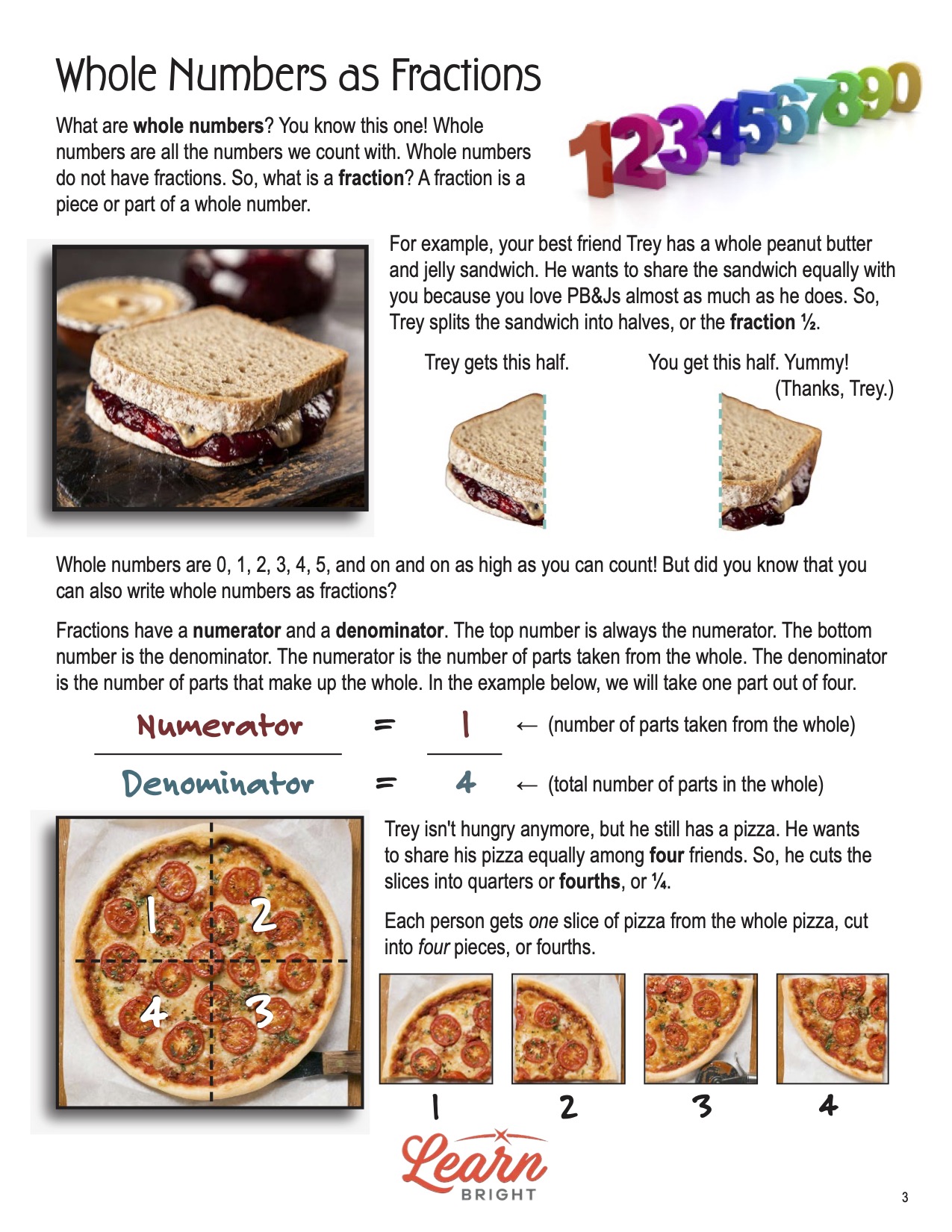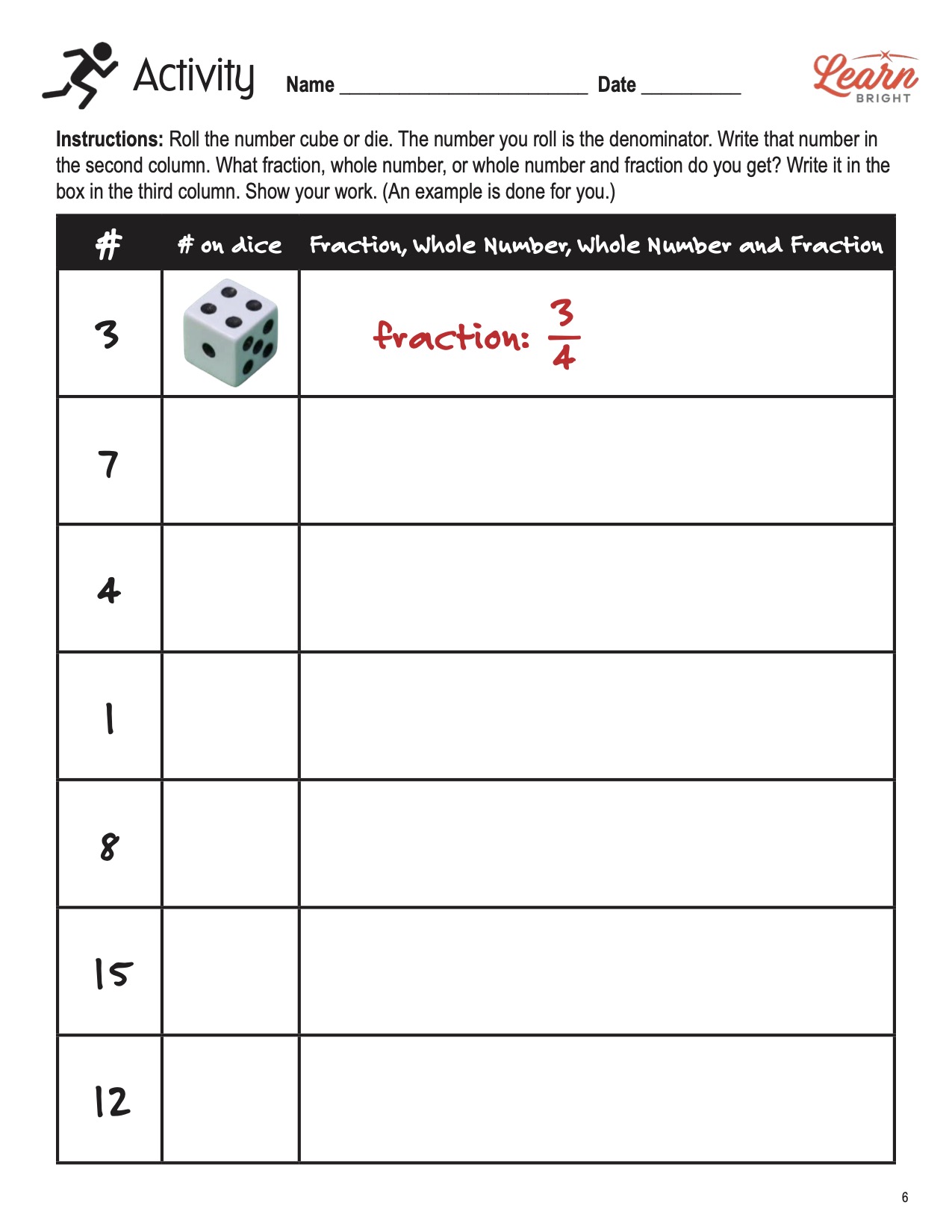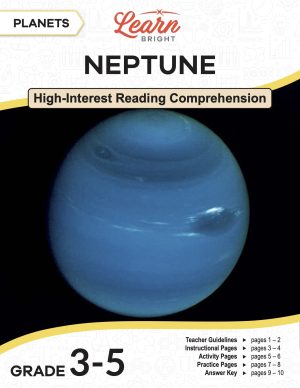Description
What our Whole Numbers as Fractions lesson plan includes
Lesson Objectives and Overview: The Whole Numbers as Fractions lesson plan teaches students how to express whole numbers as fractions and recognize equivalent fractions to whole numbers. Students will understand that even though fractions represent part of a whole, when the numerator is greater than the denominator, the number is a whole number or whole number and fraction. This lesson is for students in 3rd grade and 4th grade.
Classroom Procedure
Every lesson plan provides you with a classroom procedure page that outlines a step-by-step guide to follow. You do not have to follow the guide exactly. The guide helps you organize the lesson and details when to hand out worksheets. It also lists information in the yellow box that you might find useful. You will find the lesson objectives, state standards, and number of class sessions the lesson should take to complete in this area. In addition, it describes the supplies you will need as well as what and how you need to prepare beforehand. The activity requires fraction manipulatives, fraction bars, number cubes or dice, and scratch paper.
Options for Lesson
You can check out the “Options for Lesson” section of the classroom procedure page for additional suggestions for ideas and activities to incorporate into the lesson. Have students use more than one dice to create larger numbers to use. Have students pick a number and write as many equivalent fractions as possible. This could also be done with a partner, and students could write a list to hang up in the classroom.
Teacher Notes
The teacher notes page provides an extra paragraph of information to help guide the lesson. It mentions that the lesson introduces parentheses as grouping symbols. You can use the blank lines to write down any other ideas or thoughts you have about the topic as you prepare.
WHOLE NUMBERS AS FRACTIONS LESSON PLAN CONTENT PAGES
The Whole Numbers as Fractions lesson plan includes three pages of content. What are whole numbers? You know this one! Whole numbers are all the numbers we count with. Whole numbers do not have fractions. So, what is a fraction? A fraction is a piece or part of a whole number. For example, your best friend Trey has a whole peanut butter and jelly sandwich. He wants to share the sandwich equally with you because you love PB&Js almost as much as he does. So, Trey splits the sandwich into halves, or the fraction ½. Trey gets one half. You get the other half. Yummy! (Thanks, Trey.)
Whole numbers are 0, 1, 2, 3, 4, 5, and on and on as high as you can count! But did you know that you can also write whole numbers as fractions? Fractions have a numerator and a denominator. The top number is always the numerator. The bottom number is the denominator. The numerator is the number of parts taken from the whole. The denominator is the number of parts that make up the whole.
The lesson provides an example using 4 pizza slices. It asks students what fraction represents the whole pizza. The answer is 4/4. When the numerator and denominator are equal, the number is the same as the whole number 1. We call that an equivalent fraction. An equivalent fraction is a fraction that has the same value as another fraction or whole number. Equivalent fractions don’t have to look alike. They just have the same value or are equal. For example, do quarters (4/4) look anything like a dollar bill (1/1)? No, of course not! But four quarters have the same value as a dollar bill. They are equivalent.
Sometimes, the numerator is a number greater than the denominator. That is called an improper fraction. An improper fraction can be reduced to a whole number by dividing the numerator by the denominator. The lesson shows examples of this, such as 12/6 or 16/4, which are equal to 2 and 4 respectively. It may be easier to think of fractions as a division equation. So, think of the fractions above as division equations.
WHOLE NUMBERS AS FRACTIONS LESSON PLAN WORKSHEETS
The Whole Numbers as Fractions lesson plan includes three worksheets: an activity worksheet, a practice worksheet, and a homework assignment. Each one will help students solidify their grasp of the material they learned throughout the lesson. You can refer to the classroom procedure guidelines to know when to hand out each worksheet.
DICE ROLL ACTIVITY WORKSHEET
For the activity, students will roll a dice a few times to create fractions. The worksheet shows three columns, the first with numbers (the numerator column) and the second two empty. Students will roll the dice and write the number in the second column (the denominator column). In the third column, they will write the fraction they’ve made using the two numbers in the first two columns. Then they will say whether that number is a fraction, whole number, or whole number and fraction.
WHOLE NUMBERS AS FRACTIONS PRACTICE WORKSHEET
The practice worksheet requires students to find the equivalent numbers to the prompts in the left column. There are 10 total prompts to complete. The worksheet provides a few examples to help.
FRACTION TYPES HOMEWORK ASSIGNMENT
The homework assignment is a good review of the overall concept. Students will use the number in the left box to write an improper fraction, a proper fraction, a fraction equivalent to 1, and an improper fraction equivalent to a whole number greater than 1.
Worksheet Answer Keys
At the end of the lesson plan are answers keys for the practice and homework worksheets. Given the nature of the assignments, answers will vary, so check for accuracy. If you choose to administer the lesson pages to your students via PDF, you will need to save a new file that omits these pages. Otherwise, you can simply print out the applicable pages and keep these as reference for yourself when grading assignments.

